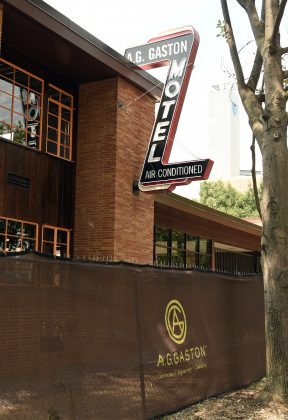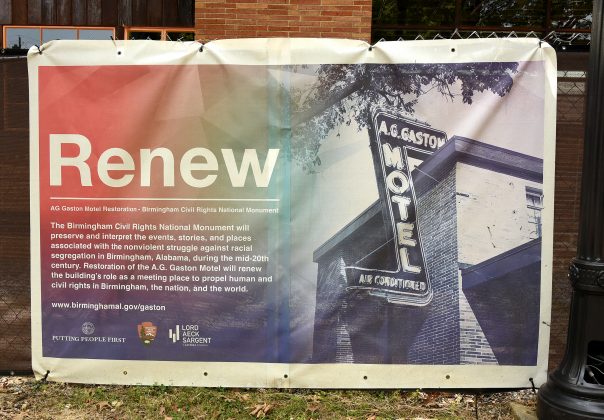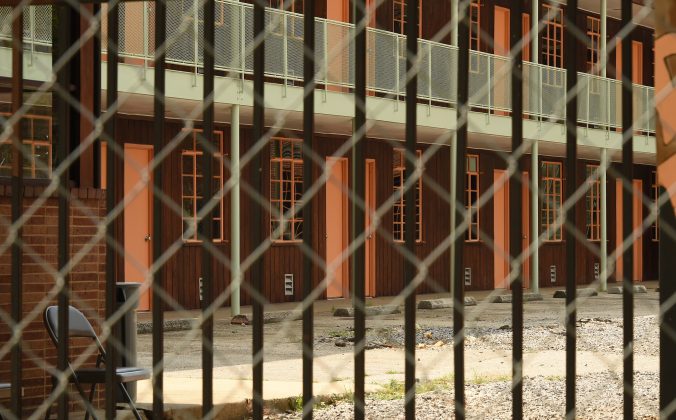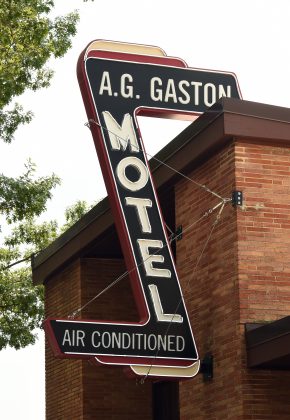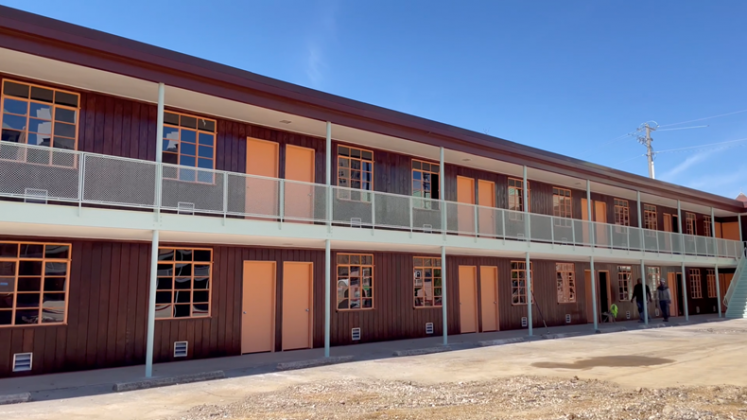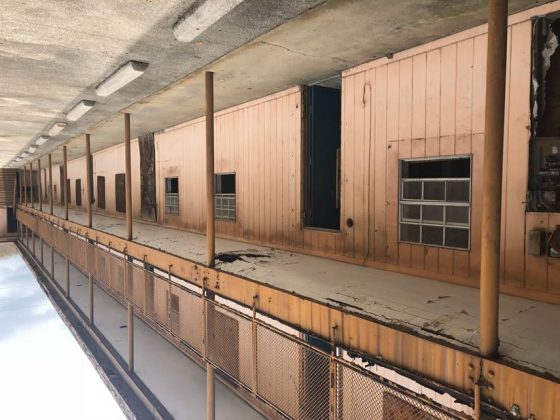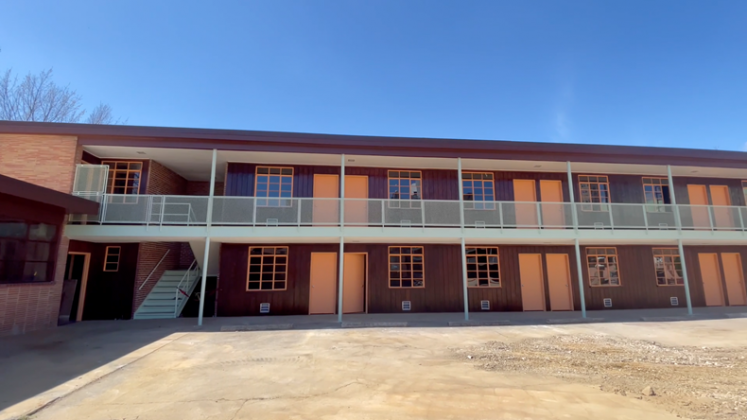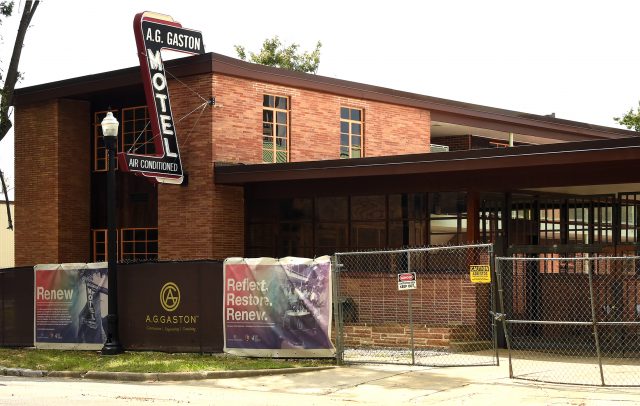
By Michael Sznajderman
Alabama Newscenter
It’s been shuttered for decades, looking more like urban blight than a beacon of Birmingham’s civil rights legacy.
But change is under way at the historic A.G. Gaston Motel, which will soon be a centerpiece of the steadily developing Birmingham Civil Rights National Monument.
Within the confines of the motel was the “War Room” used by the Revs. Martin Luther King Jr., Fred Shuttlesworth, Ralph Abernathy and other civil rights activists during the nonviolent civil actions in 1963 that ultimately broke the back of Birmingham’s policy of racially separated public accommodations. Those efforts were met with stiff and violent resistance by police led by Commissioner of Public Safety Eugene “Bull” Connor.
This spring, the city of Birmingham and the National Park Service (NPS) completed an exterior restoration of the motel, including a replica of the original neon sign (this one is lit by LEDs). But much more is to come.
Gaston built the first section of the building in 1954, expanding it later. His goal was to create a modern, first-class motel where Blacks could comfortably stay, eat and enjoy top entertainment. In its heyday the motel included a coffee shop, restaurant and cocktail lounge where entertainers like Little Richard and Stevie Wonder performed. Bham Wiki notes that the motel’s guests included Duke Ellington, Count Basie, Harry Belafonte, Johnny Mathis, Nat King Cole, Aretha Franklin and Jackie Robinson. In 1962, future Secretary of State Colin Powell and his bride, Alma, spent their wedding night at the motel.
On May 11, 1963, just as civil rights activists and Birmingham business leaders reached a compromise desegregation plan, the motel was bombed. The target was King, who often stayed at the motel but had left earlier. Several people were injured. The same day, the Ensley home of King’s brother, the Rev. A.D. King, was firebombed.
Birmingham Civil Rights National Monument Ranger Kathryn Gardiner called the Gaston Motel a “a space of community … a space of resilience … a space of remembrance.” She said the motel was a briefing site for national and international media during the Birmingham Campaign. Through those reporters, King, Shuttlesworth and other leaders “were able to speak to the heart of the nation,” Gardiner said.
“It shone a spotlight on what was happening in the South to the rest of the nation, raw and painful as it was.”
Gardiner said the NPS is taking a deliberative approach, working with partners in developing plans for the motel and the National Monument with the goal of sharing the broader story of civil and human rights in Birmingham – a story that encompasses multiple sites beyond the city’s downtown Civil Rights District.
“This story goes way beyond the National Monument footprint,” Gardiner said. “We want to make sure we are telling a really holistic story – elevating the voices of the people and the institutions critical to the mission.
“We want people to have an immersive experience … immerse people in what life was like back then,” she said. “We want to shine a light on what happened in the city.”
The National Park Service recently concluded a public comment period to gather input on how the interior of the motel should be restored and to seek broader recommendations for the monument, its exhibits and operations. The information collected online and during virtual meetings will inform more detailed plans and renderings that are expected to be available late this year. After an additional comment period, a final plan is expected to be unveiled in spring 2022.
Meanwhile, NPS officials are refining plans for a temporary exhibit, expected to open this fall, in the motel courtyard.
“Critical to our mission is to start sharing these stories now,” Gardiner said. NPS officials are also working to finalize a Junior Ranger guide about the monument, which will help tell the story as the physical monument comes together.
“Our goal is to really magnify what happened in the community, across the city. We want to encourage people to take a deep dive into the city of Birmingham and see the places where the story unfolded,” Gardiner said.
The story appeared originally on the Alabama Newscenter website.
To read related stories, click one of the links below.
‘The Show Goes On’ — Birmingham’s Carver Theatre is Back
The Historical Importance of Birmingham’s Famed Masonic Temple

